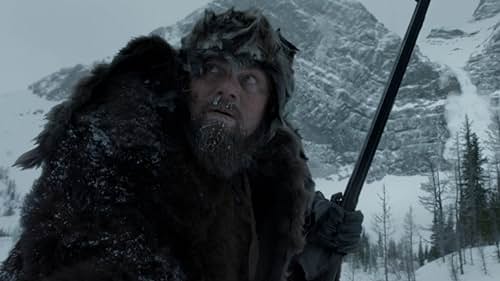Leonardo DiCaprio’s portrayal of Hugh Glass in “The Revenant” earned him his first Academy Award for Best Actor, but the real-life story of Hugh Glass is a saga even more astonishing than the film adaptation. While the movie draws inspiration from Michael Punke’s novel and historical accounts of Glass’s ordeal, separating fact from fiction reveals a narrative that is both captivating and complex.
Hugh Glass’s harrowing journey, marked by a brutal bear attack and an epic struggle for survival, forms the core of “The Revenant.” However, the extent to which the film accurately depicts Glass’s experiences is shrouded in uncertainty due to the lack of reliable historical records. Glass himself left no written accounts of his trials, leaving historians to piece together his story from fragmented sources and accounts.
Punke’s novel, upon which the film is based, draws from early historical records but likely embellishes and fictionalizes many aspects of Glass’s ordeal. Despite this, certain details can be confirmed: Glass was a real person, he was indeed mauled by a bear, and he survived the ordeal, only to meet his demise years later.
“The Revenant” remains faithful to certain historical elements, notably the depiction of Glass’s bear attack and his subsequent journey back to civilization. It portrays the grueling six-week trek Glass undertook to reach Fort Kiowa, showcasing his resilience and determination against formidable odds.
One of the most dramatic departures from historical accuracy in the film is its portrayal of Glass’s quest for vengeance against John Fitzgerald, the man who left him for dead. In reality, Glass’s motivations were driven not by a desire for retribution over his son’s death, but rather by his determination to retrieve his prized rifle, which Fitzgerald had taken. Furthermore, historical evidence suggests that Glass spared Fitzgerald’s life when they eventually crossed paths.
The film’s conclusion, featuring a violent showdown between Glass and Fitzgerald, differs significantly from historical accounts. In reality, Glass’s encounter with the Arikara tribe ended tragically, with him and his companions being ambushed and killed.
After surviving the bear attack, Glass’s life took on new chapters as he continued to explore the frontier as a fur trapper and trader. He eventually found employment with the U.S. Army and established himself at trading posts in the American West. However, his life ultimately ended in a violent confrontation with the Arikara tribe in 1833.
“The Revenant” offers a cinematic interpretation of Hugh Glass’s remarkable tale, weaving together elements of truth and fiction to create a compelling narrative. While the film takes liberties with certain aspects of Glass’s story, its portrayal of his resilience and survival against insurmountable odds resonates with audiences, cementing his legacy as a legendary figure of the American West.
FAQ
Is “The Revenant” based on a true story?
While “The Revenant” draws inspiration from the real-life experiences of Hugh Glass, a frontier man who survived a bear attack and a perilous journey back to civilization, the extent to which the film accurately depicts his story is subject to historical debate.
Did Hugh Glass really survive a bear attack?
Yes, historical records confirm that Hugh Glass was indeed attacked by a bear. However, the specifics of the attack and his subsequent survival have been embellished and fictionalized in various accounts, including the film adaptation.
What motivated Hugh Glass’s quest for vengeance in real life?
Contrary to the film’s portrayal, Glass’s motivations were primarily driven by his desire to retrieve his prized rifle, which had been taken by John Fitzgerald, the man who left him for dead. The film’s depiction of Glass seeking revenge for his son’s death is fictionalized.
How accurate is the depiction of Hugh Glass’s journey back to civilization in the film?
While the film showcases the arduous journey Glass undertook to reach Fort Kiowa, the specific details and timeline are subject to artistic interpretation. Historical accounts confirm Glass’s remarkable resilience and determination but may differ in certain details.
What ultimately happened to Hugh Glass after his ordeal?
Following his survival, Hugh Glass continued to explore the frontier as a fur trapper and trader. He later found employment with the U.S. Army and established himself at trading posts in the American West. However, his life ended tragically in a violent confrontation with the Arikara tribe in 1833.
As audiences grapple with the blend of fact and fiction in “The Revenant,” these FAQs shed light on the historical accuracy of the film and the enduring legacy of Hugh Glass as a legendary figure of the American West.
